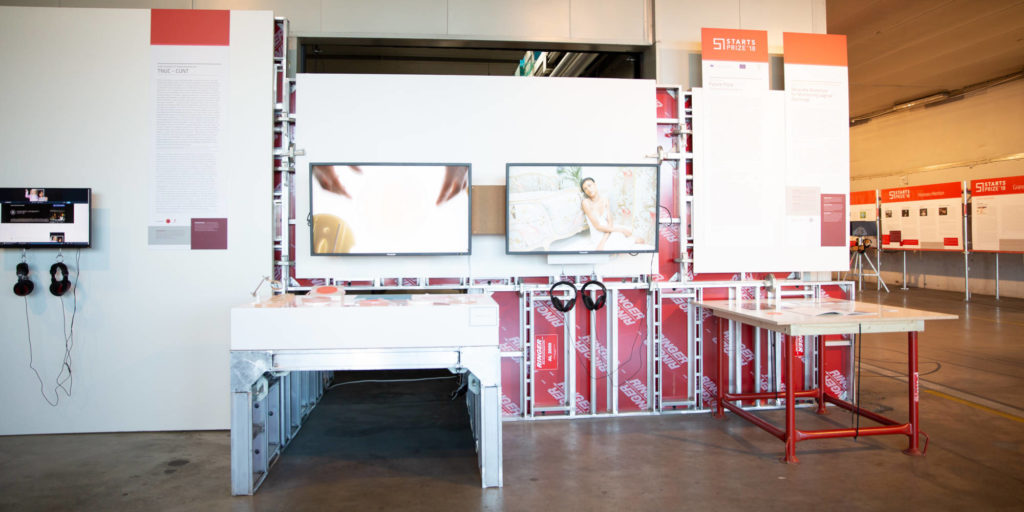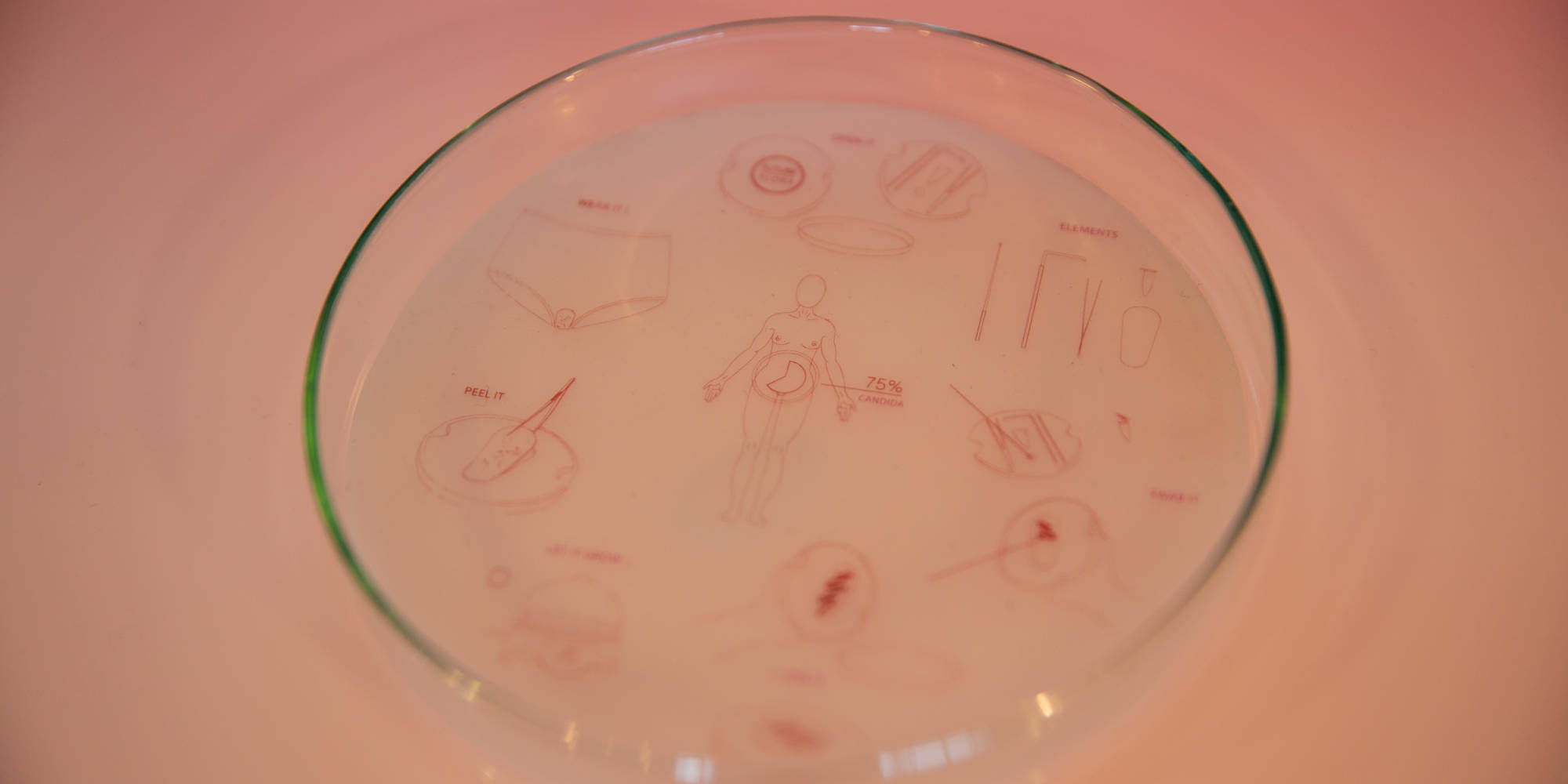Our bodies are built for care, visible in daily rituals such as grooming, washing, and eating (Hamington 2004), and our routine, habits, and behaviors can either support or worsen our lives over time. At the same time, a lack of everyday knowledge and misconceptions about the female body persist (Braun & Wilkinson 2001). While the female body has historically been a subject of taboo, limiting the development of women’s health and care in general (Rossmann 2008) – experiences that are considered female, such as menstruation, pregnancy, and menopause – it has a meaning of its own and depends upon the subjective experiences each woman might have. A woman’s relationship with her body is perhaps the most direct relationship she has with the earth itself.
Future Flora is addressed to females that are taking control of their own bodies as a new precious and intimate practice of self-care, becoming a participant in the culture and the knowledge of science. The user is a woman that wants to embrace biotechnology in her house, allowing science to show alternatives to traditional medicine and probiotics. With Future Flora, Tomasello explores a female approach in the context of personal self-care and body awareness by generating an intimate and delicate interaction between the invention and the female body. The women themselves can nurture bacteria, which are crucial for the vaginal flora, at home before applying them as a second layer in their panties.

In designing technologies for intimate care for women, Almeida explores interactions in health and wellbeing that enable the development of bodily knowledge in the area of intimate care. Intimate care is associated with personal hygiene, body functions, body products, and is a lifetime practice that requires well-defined interventions – with or without support by others. From toolkits that include e-textiles and intimate wearables to digital technology, this body of work begins to explore novel design concepts and devices that tackle bodily taboos and awkwardness. It offers insights on how designing for intimate care is inevitably entwined with female approaches to highlight the distinct attributes and experiences on and in the female body.
In this chapter, we will discuss how design at the intersection of science and technology can contribute to revolutionizing practices of self-care for the female body. We will consider “citizen science” and DIY (Do-It-Yourself) approaches to and with technology as tools to advance personal and intimate health and care as well as methods that support education and bodily wellbeing.
“Crafting Anatomies: The Body as Site in Fashion and Textile Research Practice”
This publication places the human body at the center of a multidisciplinary exploration; revealing how this entity acts as a catalyst for archival research, creative dialogues, and hybrid fabrications through the lenses of fashion and textiles. The book questions and elucidates how our response to the corporeal has shifted over time and is currently influencing design methodologies and therefore shaping socio-material practice. The editors and contributors possess a shared interest in questioning and creatively exploring how our anatomies and their intrinsic layers continue to be “crafted” within historical, psychological and biological contexts.
Credits:
Nottingham Trent University
Editors: Katherine Townsend, Rhian Solomon, Amanda Briggs-Goode.
Bloomsbury Publishing


